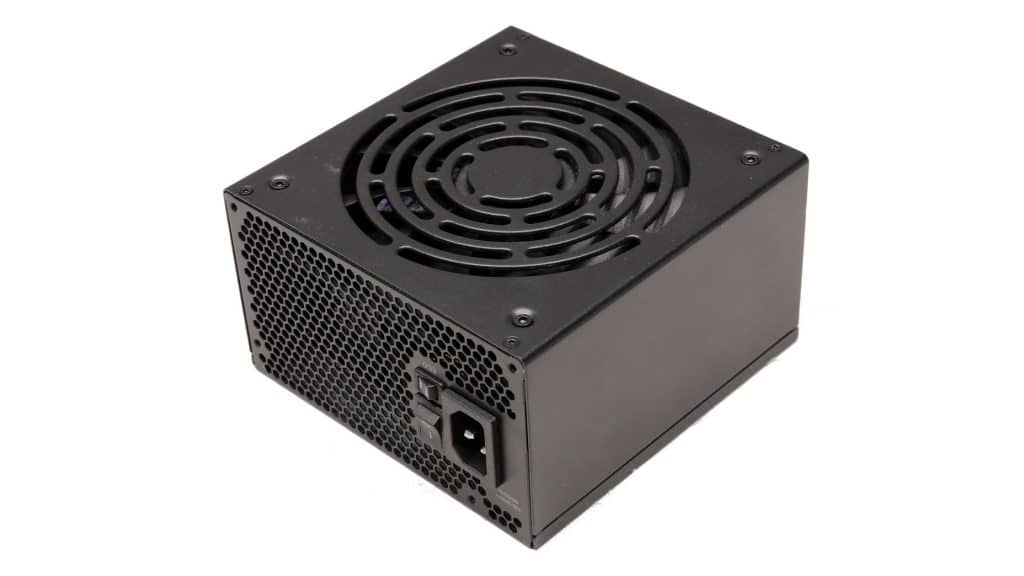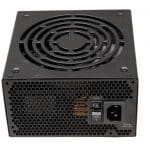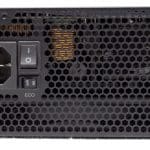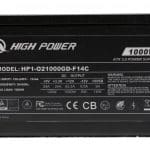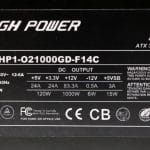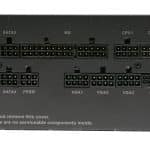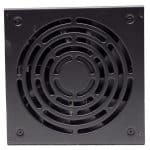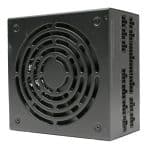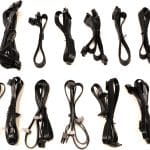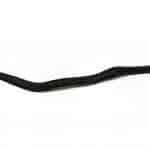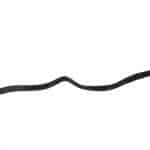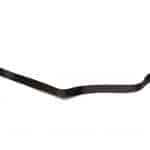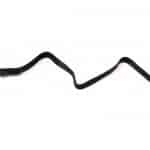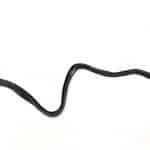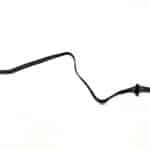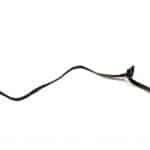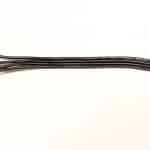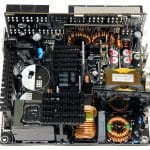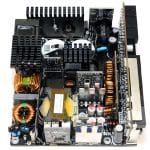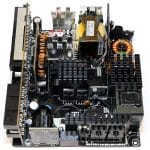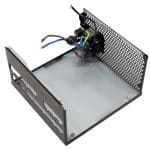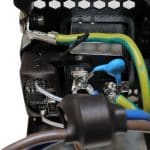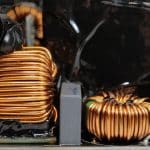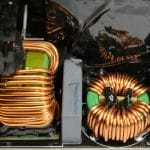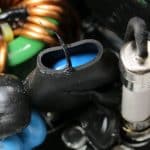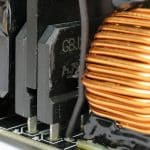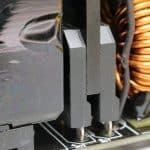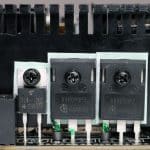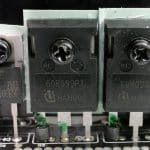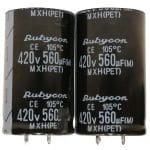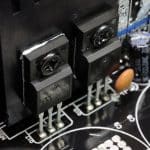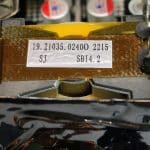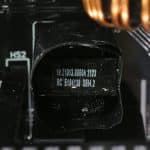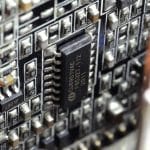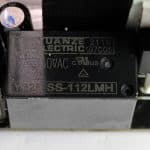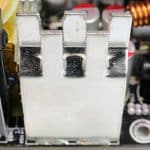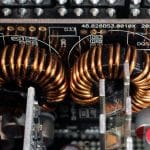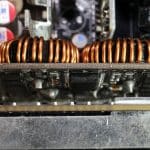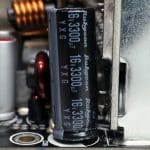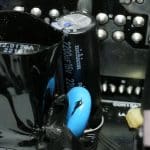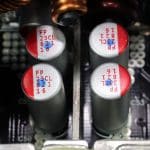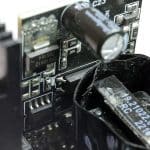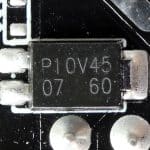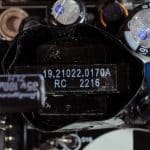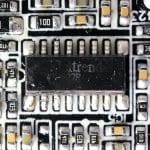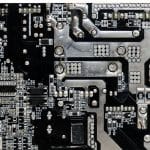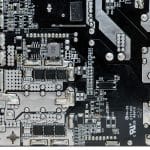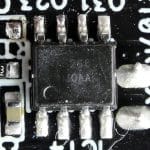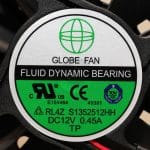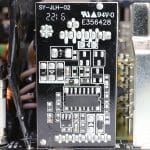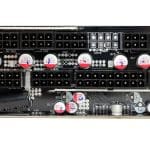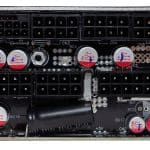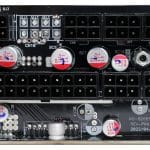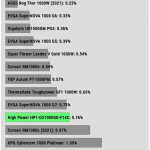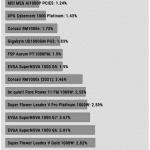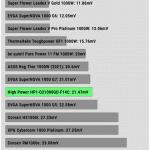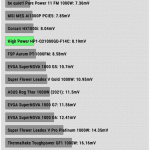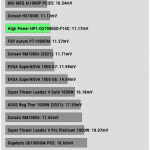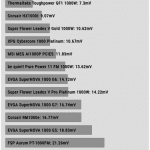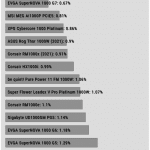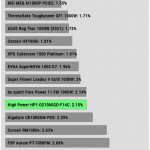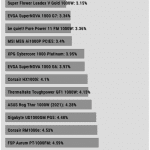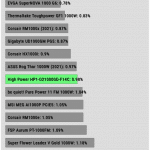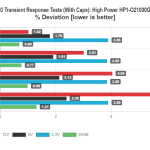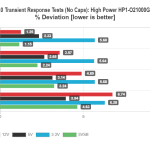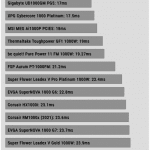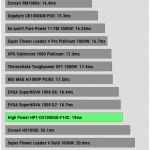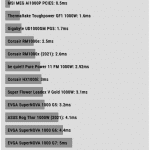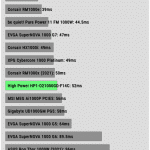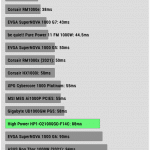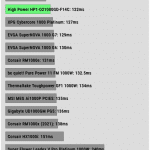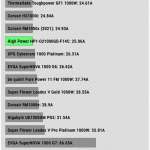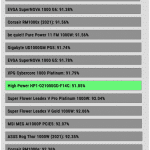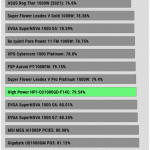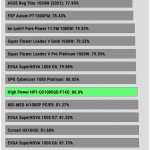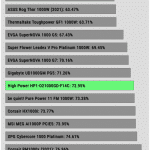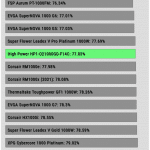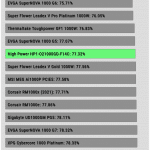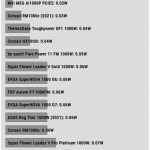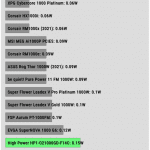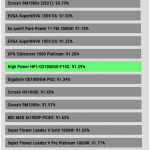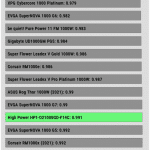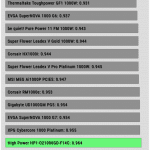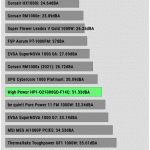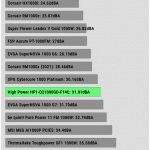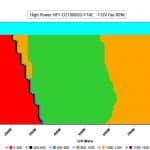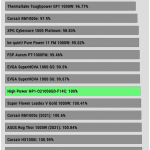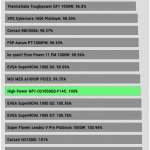High Power is a PSU manufacturer, meaning that it mostly provides platforms to other brands instead of diving deep into the retail market. The newest product in its portfolio is the HP1-O21000GD-F14C which achieves high performance and is also equipped with a 12VHPWR connector, able to provide up to 450W.
I’ve known High Power for quite a long, and I am highly familiar with its products. This manufacturer was among the first to release an ATX12VO PSU and was among the first to release a PSU compatible with the tough ATX v3.0 spec, featuring a 12VHPWR connector, meaning that it passes all corresponding transient response tests.
The HP1-O21000GD-F14C uses a fully modular cable design. Unfortunately, I don’t have any pricing or warranty info for you since this depends on the configuration. One brand can order this platform with full Japanese caps and long cables, while another can take it with lower-grade caps and shorter cables; hence its price will be lower, and the warranty period won’t be as long as in the first case.
Cybenetics Report
- Manufacturer (OEM): High Power
- Max Power: 1000W
- Cybenetics Efficiency: [115V] Platinum (89-91%)
- 80 Plus Efficiency: no info
- Noise: Cybenetics Standard++ (30 – 35 dBA)
- Compliance: ATX12V v3.0
- Alternative Low Power Mode support: Yes
- Power 12V: 1000W
- Power 5V + 3.3V: 120W
- Power 5VSB: 15W
- Cooling: 135 mm Fluid Dynamic Bearing Fan (RL4Z S1352512HH)
- Semi-Passive Operation: Yes
- Modular Design: Yes (Fully)
- High Power Connectors: 2x EPS (2x cables), 4x PCIe 6+2 pin (2x cables), 1x PCIe 12+4 pin 450W (single cable)
- Peripheral Connectors: 12x SATA (4x cables), 4x 4-pin Molex (single cable)
- ATX/EPS Cable Length: 600/700mm
- Distance between SATA connectors: 100mm
- Distance between 4-pin Molex connectors: 100mm
- In-cable capacitors: No
- Dimensions (W x H x D): 150 x 85 x 150mm
- Weight: 1.69 kg (3.73 lb)
- Warranty: no info
Box & Bundle
The samples I had didn’t have any retail package, so there is nothing to show you here. Most OEM samples are like this, no package and relevant design since the client is responsible for the package design and chooses what will be included in the bundle.
Product Photos
The exterior design is plain since this is an OEM product. The brands usually change the casing according to their budget and taste.
Cables
The cables are long, and the provided number of connectors is adequate. Moreover, you will find a 450W 12VHPWR connector.
Protection Features
|
OCP (Cold @ 29°C) |
12V: 121A (145.26%), 11.980V |
|
OCP (Hot @ 41°C) |
12V: 121A (145.26%), 11.996V |
|
OPP (Cold @ 32°C) |
1431.52W (143.15%) |
|
OPP (Hot @ 41°C) |
1431.52W (143.15%) |
|
OTP |
✓ (186°C @ 12V Heat Sink) |
|
SCP |
12V to Earth: ✓ |
|
PWR_OK |
Proper operation |
|
NLO |
✓ |
|
SIP |
Surge: MOV |
OCP is set high at 12V, and the same goes for OPP. The minor rails are strong on paper, so the actual OCP triggering point falls within 130%. Still, there is no point for 30A at 3.3V since modern systems only lightly use this rail. That said, I didn’t notice any load regulation or ripple suppression issues.
Over temperature, protection is set higher than usual because the PSU has a semi-passive mode.
Part Analysis
| General Data | |
| Manufacturer (OEM) | High Power |
| PCB Type | Double-Sided |
| Primary Side | |
| Transient Filter | 4x Y caps, 2x X caps, 2x CM chokes, 1x MOV, 1x CM02X (Discharge IC) |
| Inrush Protection | 1x NTC Thermistor SCK-057 (5 Ohm) & Relay |
| Bridge Rectifier(s) |
2x HY GBJ2506L (600V, 25A @ 100°C)
|
| APFC MOSFETs |
2x Infineon IPW60R099P7 (600V, 20A @ 100°C, Rds(on): 0.099Ohm)
|
| APFC Boost Diode |
1x Toshiba TRS10E65F (650V, 10A)
|
| Bulk Cap(s) |
2x Rubycon (420V, 560uF each or 1,120uf combined, 2,000h @ 105°C, MXH)
|
| Main Switchers |
2x Infineon IPA60R099P7 (600V, 20A @ 100°C, Rds(on): 0.099Ohm)
|
| APFC Controller | Infineon ICE3PCS01G |
| Resonant Controller | Champion CU6901VAC |
| Topology |
Primary side: APFC, Half-Bridge & LLC converter
Secondary side: Synchronous Rectification & DC-DC converters |
| Secondary Side | |
| +12V MOSFETs | 6x Infineon BSC010N04LS (40V, 178A @ 100°C, Rds(on): 1mOhm) |
| 5V & 3.3V | DC-DC Converters: 8x Infineon BSC0906NS (30V, 40A @ 100°C, Rds(on): 4.5mOhm) PWM Controller(s): ANPEC APW7159C |
| Filtering Capacitors | Electrolytic: 2x Rubycon (3-6,000h @ 105°C, YXG), 2x Rubycon (4-10,000h @ 105°C, YXJ), 2x Nichicon (4-10,000h @ 105°C, HE), 2x Rubycon (6-10,000h @ 105°C, ZLH), 2x Nippon Chemi-Con (4-10,000h @ 105°C, KY) Polymer: 23x FPCAP |
| Supervisor IC | Weltrend WT7527RA (OVP, UVP, OCP, SCP, PG) |
| Fan Controller | STCmicro STC15W408AS |
| Fan Model | Globe Fan RL4Z S1352512HH (135mm, 12V, 0.45A, Fluid Dynamic Bearing Fan) |
| 5VSB Circuit | |
| Rectifier |
1x P10V45 SBR (45V, 10A)
|
| Standby PWM Controller | SI8016HSP8 |
High Power used top-of-the-shelf parts for this platform, including Rubycon caps for the primary side and a high-end mix of Rubycon and Chemi-Con electrolytic caps on the secondary side. Moreover, it used a large number of polymer caps by FPCAP. The cooling fan is also of high quality; the same applies to the FETs on both primary and secondary sides. The platform’s design is typical in the mid to high-end categories: half-bridge topology and LLC resonant converter on the primary and synchronous rectification and DC-DC converters for the secondary side.
Testing Methodology
I follow Cybenetics’ PSU testing methodology since I use the same labs. Moreover, the same methodology describes the performance algorithm that I use to extract overall performance. This algorithm has been updated several times, so in some cases, where I have to include some older products, I have to use older versions. This is why in some reviews, you might notice deviations in overall performance compared to other reviews. Finally, if you are wondering about my equipment, you can look at the following scheme.
Load Regulation
Load regulation is satisfactory.
Ripple Suppression
Ripple is low on all rails. It could be even lower at 5VSB, but I am not so demanding on this rail.
Transient Response
I would like to see a tighter transient response on all rails, especially from an ATX 3.0 PSU.
Transient Response – ATX 3.0
The PSU passes all power excursion tests with the extra capacitance that the ATX 3.0 requires.
Hold Up Time
The hold-up time is long, and the power ok signal is accurate
Timings
The PSU supports Alternative Low Power Modes.
Inrush Current
Inrush current is low at 115V and on the high side with 230V.
Efficiency Normal, Light & Super-Light Loads
The platform is efficient. There is room for improvement at light loads, though.
Average Efficiency 5VSB
High Power should use a more efficient 5VSB rail.
Vampire Power
Vampire power is low with 115V and could be lower with 230V.
Average Efficiency
The average efficiency is high, especially if High Power lists this PSU as Gold (in the 80 PLUS scheme).
Average PF
The APFC converter performs well.
Average Noise
Average noise output should be lower, given the efficient platform.
Fan Noise & Speed Maps @ 28-32 °C
With up to 330W load, the PSU’s fan doesn’t spin. It takes more than 590W to exceed 30 dBA, and with 800W and higher, it enters the 35-30 dBA zone.
Overall Performance
This High Power unit performs extremely well, meeting eye-to-eye with formidable opponents from Super Flower and Corsair. FSP’s G7 platform and the Super Flower Leadex V Pro Platinum remain on top. With 230V input High Power’s offering achieves a good place in the overall performance chart.
Epilogue
I haven’t tested a high-performance unit from other OEMs than the usual ones, CWT, Seasonic, and Super Flower, for quite some time now, so it was a pleasant surprise to see a new and competent platform by High Power. The HP1-O21000GD-F14C sample that I had used top parts but these alone cannot guarantee high performance. It is like a recipe, you might have the proper ingredients but mess up during cooking, so the final results are not up to the expectations of the parts used. Thankfully, this is not the case here. On the contrary, this High Power unit met eye-to-eye with some of the best units in this category and now comes down to the asking price. If this is on par with the competing OEMs, we might see this platform soon used by key brands in the business, and it is always nice for all of us consumers to have more choices.
Buy Corsair HX1000i Buy Corsair RM1000x Buy EVGA 1000 P6 Buy ASUS Rog Strix 1000- Full power at 47°C
- High overall performance
- PCIe 5.0 ready (Passed all corresponding ATX 3.0 tests)
- Efficient
- Quiet operation at light and moderate loads
- High build quality
- Capable APFC converter
- Tight enough load regulation (except 5VSB)
- Good ripple suppression
- Long hold-up time
- Accurate power ok signal
- Alternative Low Power Mode (ALPM) support
- Adequate number of connectors
- Quality, FDB fan
- OPP and 12V OCP triggering points need adjustment
- The fan speed profile could be more relaxed
- No need for such high amperage at 3.3V
- Mediocre 5VSB efficiency
- Transient response could be better (especially at 3.3V)
- High inrush current with 230V input
- Short distance between all peripheral connectors

